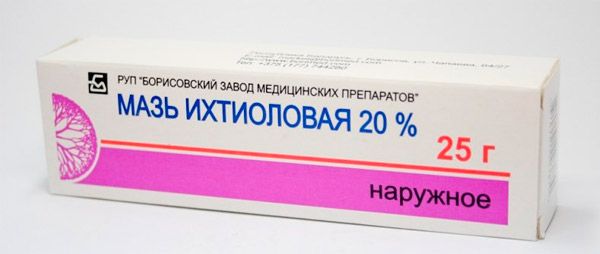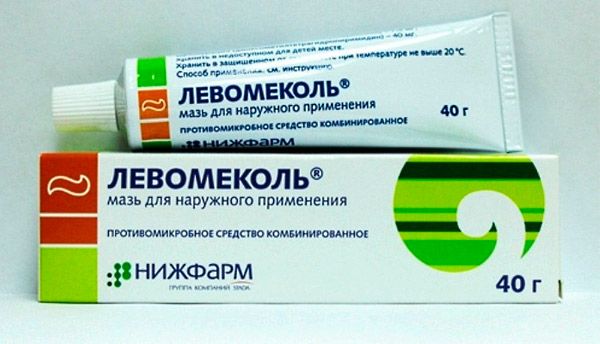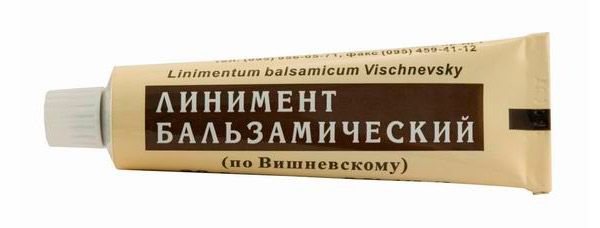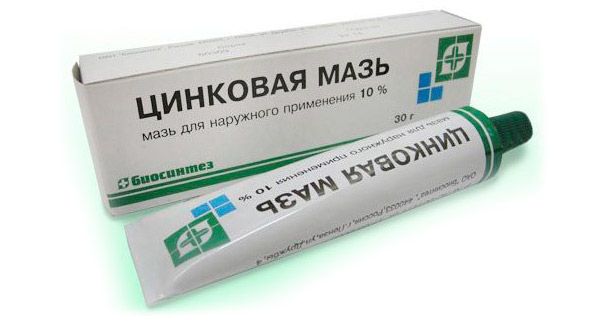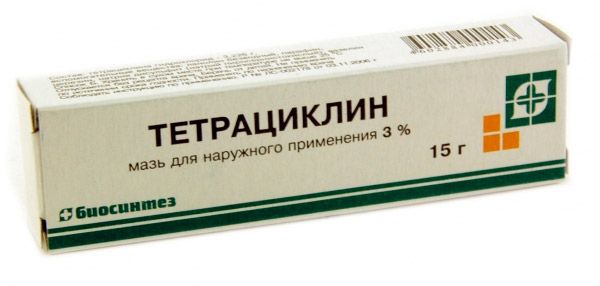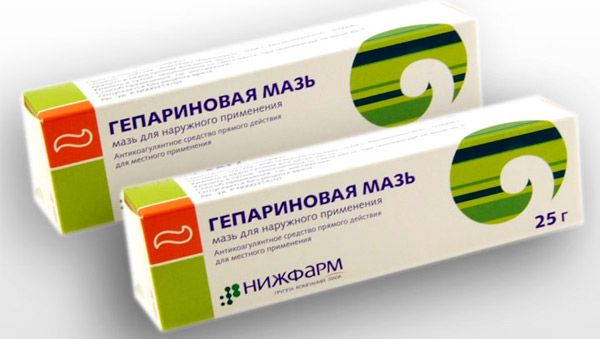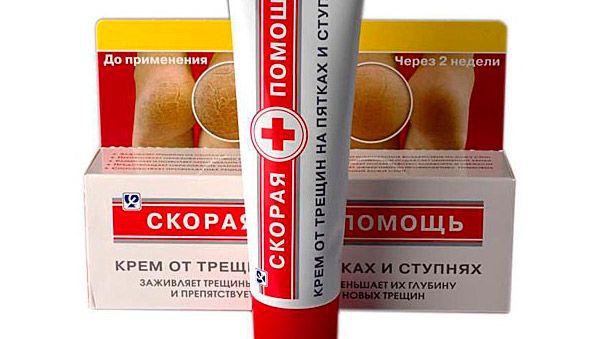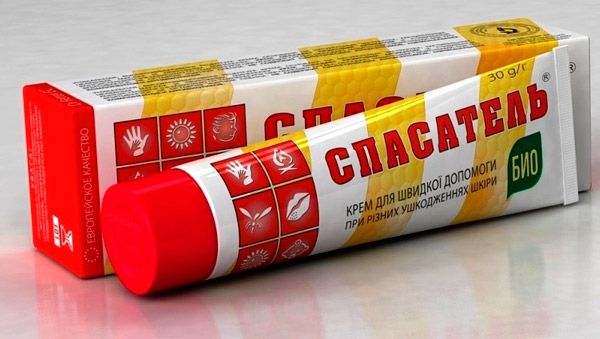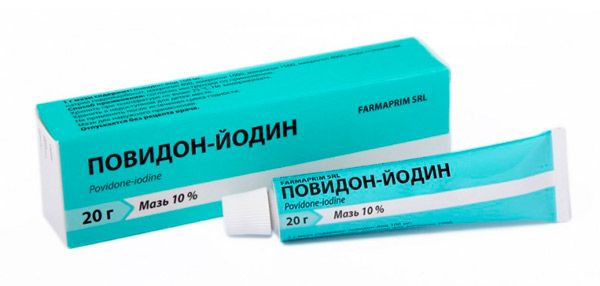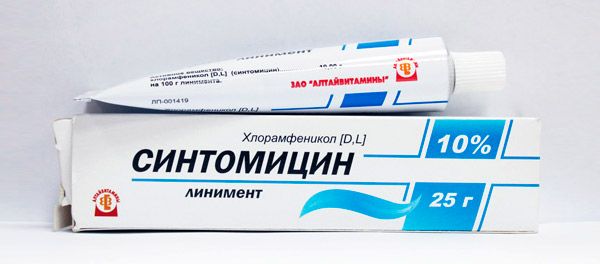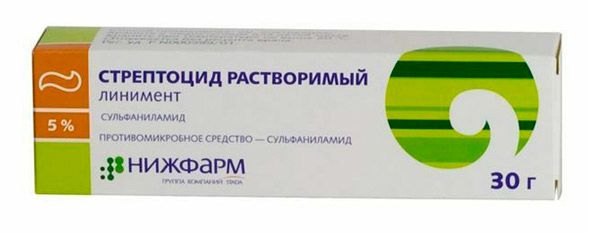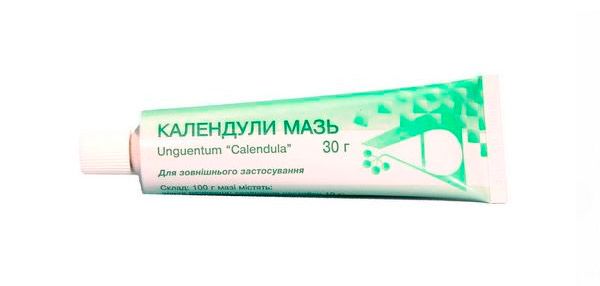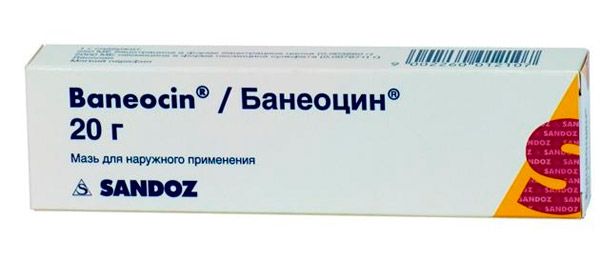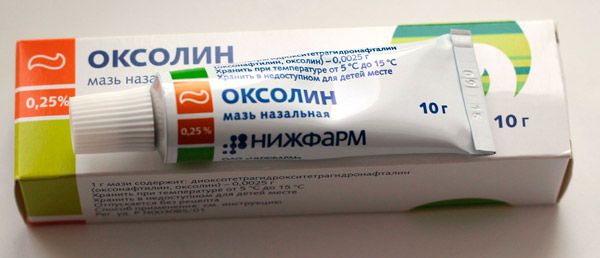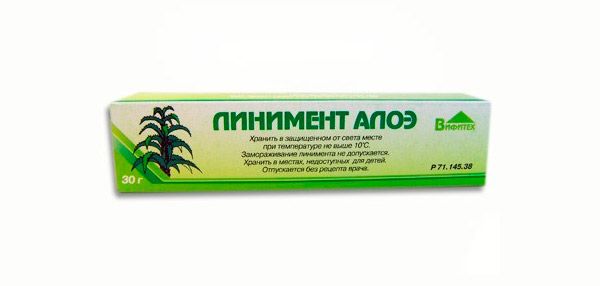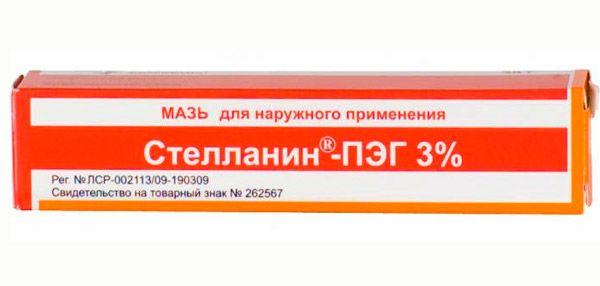Medical expert of the article
New publications
Preparations
Ointments for wound healing
Last reviewed: 04.07.2025

All iLive content is medically reviewed or fact checked to ensure as much factual accuracy as possible.
We have strict sourcing guidelines and only link to reputable media sites, academic research institutions and, whenever possible, medically peer reviewed studies. Note that the numbers in parentheses ([1], [2], etc.) are clickable links to these studies.
If you feel that any of our content is inaccurate, out-of-date, or otherwise questionable, please select it and press Ctrl + Enter.
It is known that the faster the wound surface heals, the smaller the trace of the wound will remain. Any family's first aid kit should contain some kind of ointment for wound healing, because no one is immune from various skin injuries.
Of course, a small abrasion or cut can be treated only with brilliant green or peroxide. The ointment form is suitable for treating both minor and significant damage to the integrity of the skin.
Indications for the use of ointments for wound healing
The use of ointment medicinal forms for the treatment of wounds and damage to the skin or soft tissues often contributes to their rapid healing. Although, for complete healing, as a rule, several different forms of medications may be required, depending on the stage of the granulation process. Thus, the form of release of the drug can vary from ointment-like to gel-like or paste-like emulsion.
Such a medicine as ointment has been known for many centuries. Similar preparations have long been used in the treatment of wounds, and are still used today. The ointment structure is such that a kind of protective film is formed on the wound surface, which helps to soften the crust (scab) and prevents pathogenic flora from entering from the outside. Such properties are most relevant for so-called dry wounds, which are not accompanied by all sorts of purulent or serous discharge.
The use of ointment preparations prevents cracking of the scab and the development of an inflammatory process underneath it.
Some medications with an ointment-like consistency are used at any stage of healing of skin damage. This applies to drugs that, in addition to forming protection, promote active trophism and restoration of damaged tissue layers.
Names of ointments for wound healing
Argosulfan - ointment with silver for wounds
|
|
Pharmacodynamics and pharmacokinetics |
The medication contains sulfathiazole, which is known for its antimicrobial action. Silver ions enhance this effect. A small dose of the drug enters the systemic circulation. |
Using Ointments for Wound Healing During Pregnancy |
It can only be prescribed in extreme cases. |
Contraindications for use |
Potential for allergies, hereditary deficiency of glucose-6-phosphate dehydrogenase, newborns, lactating women. |
Side effects of wound healing ointments |
Rarely – allergy, dermatitis, itching. |
Method of administration and dosage |
Use up to 3 times a day. Maximum duration of therapy is 2 months. |
Overdose of wound healing ointments |
No data available. |
Interactions with other drugs |
Do not use simultaneously with other external preparations on the same skin area. |
Storage conditions and shelf life |
Store in a cool, dark place for up to 2 years. |
Ichthyol ointment
|
|
Pharmacodynamics and pharmacokinetics |
A product based on ichthyol, has significant anti-inflammatory and analgesic effects. Does not enter the systemic circulation. |
Use during pregnancy |
Allowed for use, provided that it does not come into contact with mucous membranes. |
Contraindications for use |
Not used in pediatrics, as well as in patients with a tendency to allergic reactions. |
Side effects |
Allergic processes that are expressed in skin reactions. |
Method of administration and dosage |
Apply carefully, under a bandage or gauze, up to 3 times a day. |
Overdose |
External overdose is considered unlikely. |
Interactions with other drugs |
Do not use on the same skin area with other external medications. |
Storage conditions and shelf life |
Can be stored for up to 5 years under normal conditions. |
Levomekol ointment for wounds
|
|
Pharmacodynamics and pharmacokinetics |
Antimicrobial and wound-healing ointment form based on chloramphenicol and methyluracil. It is not toxic to the body. |
Use during pregnancy |
Possible only after doctor's permission. |
Contraindications for use |
Tendency to allergic processes, psoriasis, mycosis, eczematous rashes, children under 3 years of age. |
Side effects |
Manifestations of allergies, general weakness. |
Method of administration and dosage |
Levomekol is applied to gauze or a tampon and used for no longer than 4 days. |
Overdose |
Contact sensitization with prolonged use. |
Interactions with other drugs |
Do not prescribe in combination with sulfonamides, cytostatics, or pyrazoline preparations. |
Storage conditions and shelf life |
Store at room temperature for up to 2 years. |
Vishnevsky ointment
|
|
Pharmacodynamics and pharmacokinetics |
A well-known antiseptic based on the properties of tar, xeroform and castor oil. Eliminates inflammation, dries up oozing. |
Using Vishnevsky ointment during pregnancy |
Not recommended for use by pregnant and lactating women. |
Contraindications for use |
Excessive sensitivity of the skin, significant sizes of affected skin, tumors. |
Side effects |
Manifestations of allergies, increased ultraviolet sensitivity. |
Method of administration and dosage |
Use twice - in the morning and at night, under a bandage, until completely healed. |
Overdose |
Increased side effects. |
Interactions with other drugs |
No information available. |
Storage conditions and shelf life |
Can be stored for up to 5 years in a cool place. |
Zinc ointment on the wound
|
|
Pharmacodynamics and pharmacokinetics |
External agent with drying, adsorbing and antiseptic action. Eliminates signs of inflammation and tissue irritation. |
Use of ointments during pregnancy |
Not recommended for use by pregnant women. |
Contraindications for use |
Tendency to allergic processes. |
Side effects |
Allergic manifestations. |
Method of administration and dosage |
Use locally, up to 3 times a day, as needed. |
Overdose |
No cases have been recorded. |
Interactions with other drugs |
It is not recommended to mix with other ointments and creams. |
Storage conditions and shelf life |
Store at normal temperature for up to 4 years. |
Tetracycline ointment
|
|
Pharmacodynamics and pharmacokinetics |
Tetracycline ointment is an antibiotic preparation for external use. Pharmacokinetic properties have not been studied. |
Use of the product during pregnancy |
Highly not recommended. |
Contraindications for use |
Allergic sensitivity of the body, fungal skin pathologies, pediatrics (children under 11 years of age). |
Side effects |
Photosensitivity of the skin, redness, discomfort. |
Method of administration and dosage |
Use under a bandage up to 2 times a day. Duration of therapy is 14-20 days. |
Overdose |
There have been no recorded cases of overdose. |
Interactions with other drugs |
Not studied. |
Storage conditions and shelf life |
Store in the refrigerator for up to 2 years. |
Heparin ointment
|
|
Pharmacodynamics and pharmacokinetics |
Anticoagulant, exhibits antithrombotic, anti-inflammatory and antiexudative properties. |
Use during pregnancy |
Not recommended in the second half of pregnancy. |
Contraindications for use |
Heparin ointment should not be applied to an open wound. |
Side effects |
Allergic manifestations. |
Method of administration and dosage |
It is used only to eliminate aseptic infiltrates and local swelling, as well as to resolve subcutaneous hemorrhages. |
Overdose |
Bleeding, increased bleeding. |
Interactions with other drugs |
The effect is enhanced by oral administration of venotonics and non-steroidal anti-inflammatory drugs. |
Storage conditions and shelf life |
Store in the refrigerator for up to 3 years. |
First Aid Ointment
|
|
Pharmacodynamics and pharmacokinetics |
A vitamin-herbal-medicinal product for accelerating tissue recovery after superficial damage. |
Using Ointments for Wound Healing During Pregnancy |
There is no practice of using the external remedy First aid for pregnant women. |
Contraindications for use |
Intolerance to the composition of the drug. |
Side effects of wound healing ointments |
It is likely that an allergy will develop. |
Method of administration and dosage |
Apply after preliminary treatment with an antiseptic, up to 3 times a day, without intensive rubbing. Duration of use - until complete healing. |
Overdose of wound healing ointments |
No information was received. |
Interactions with other drugs |
There are no studies on drug interactions of the drug. |
Storage conditions and shelf life |
Store in a cool place for up to 2 years. |
Rescuer ointment
|
|
Pharmacodynamics and pharmacokinetics |
A complex preparation with a nourishing, restorative and softening effect. Provides a quick and long-lasting effect. |
Using Ointments for Wound Healing During Pregnancy |
Allowed for use by pregnant women. |
Contraindications for use |
Chronic wounds (ulcers), tendency to allergies. |
Side effects of wound healing ointments |
Relapse of chronic inflammation, allergy. |
Method of administration and dosage |
Apply to a washed and dried wound surface as needed or when changing a bandage. Periodically, allow the wound to dry without a bandage or ointment for 20 minutes. |
Overdose of wound healing ointments |
No cases described. |
Interactions with other drugs |
It is not recommended to apply the product simultaneously with iodine solution or hydrogen peroxide. |
Storage conditions and shelf life |
Store for up to 2 years at room temperature. |
Povidone-iodine ointment
|
|
Pharmacodynamics and pharmacokinetics |
An iodine-based preparation for wound healing. |
Use during pregnancy |
Not recommended during pregnancy and breastfeeding. |
Contraindications for use |
Increased thyroid function, impaired renal function, hypersensitivity to iodine preparations, early childhood. |
Side effects |
Hypersensitivity reactions. |
Method of administration and dosage |
The dosage is determined by the doctor based on the concentration of the active component and indications for use. |
Overdose |
No information was received. |
Interactions with other drugs |
No studies have been conducted. |
Storage conditions and shelf life |
Store in cool conditions for up to 2 years. |
Synthomycin ointment
|
|
Pharmacodynamics and pharmacokinetics |
A drug from the antibiotic group with the active substance chloramphenicol. |
Using Ointments for Wound Healing During Pregnancy |
Use with great caution. |
Contraindications for use |
Tendency to allergies. Psoriatic, eczematous, fungal skin lesions. |
Side effects of wound healing ointments |
Allergic manifestations. |
Method of administration and dosage |
Apply under gauze, bandage or parchment, once every 1-3 days. Duration of therapy is individual. |
Overdose of wound healing ointments |
Increased side effects. |
Interactions with other drugs |
Do not use together with cytostatics, ethyl alcohol, antifungal drugs, sulfonamides. |
Storage conditions and shelf life |
Store in the refrigerator for up to 2 years. |
Revolution Ointment wound ointment |
|
Pharmacodynamics and pharmacokinetics |
The natural composition of this product ensures the fastest healing, stimulates regeneration. Suitable for both accidental and surgical tissue damage. |
Use during pregnancy |
Allowed only under the supervision of a doctor. |
Contraindications for use |
Tendency to allergic reactions. |
Side effects |
Allergic rashes, itching. |
Method of administration and dosage |
Apply as needed until completely healed. |
Overdose |
No data available. |
Interactions with other drugs |
No drug interactions found. |
Storage conditions and shelf life |
Store at room temperature for up to 3 years. |
Streptocide ointment
|
|
Pharmacodynamics and pharmacokinetics |
A product with a sulfanilamide base, which has an antimicrobial and healing effect. |
Using Ointments for Wound Healing During Pregnancy |
Streptocide ointment should not be used at any stage of pregnancy. |
Contraindications for use |
Severe kidney pathologies, possibility of allergy. |
Side effects of wound healing ointments |
Allergic manifestations. |
Method of administration and dosage |
Apply on its own or under a bandage, several times a day, until completely cured. |
Overdose of wound healing ointments |
Increased severity of side effects. |
Interactions with other drugs |
During therapy with streptocide ointment, it is undesirable to use caffeine, digoxin, novocaine, phenobarbital, or adrenaline. |
Storage conditions and shelf life |
Under normal conditions, it can be stored for up to 5 years. |
Calendula ointment
|
|
Pharmacodynamics and pharmacokinetics |
A herbal remedy for wounds that contains substances with antiseptic, anti-inflammatory and regenerative properties. Kinetic properties have not been studied. |
Use during pregnancy |
There are no studies on the use of calendula in pregnant women. |
Contraindications for use |
Allergic sensitivity to calendula. |
Side effects |
Manifestations of allergies. |
Method of administration and dosage |
The ointment-like agent is applied under a bandage or without it according to an individually prescribed scheme. |
Overdose |
It is considered impossible. |
Interactions with other drugs |
Not defined. |
Storage conditions and shelf life |
Store in a dark place for up to 30 months. |
Baneocin ointment
|
|
Pharmacodynamics and pharmacokinetics |
Wound remedy with a combined antibiotic (bacitracin + neomycin). Absorption through the skin is minimal. |
Using Ointments for Wound Healing During Pregnancy |
Not recommended for use during pregnancy. |
Contraindications for use |
Tendency to allergies, large wound surfaces, severe heart and kidney diseases. |
Side effects of wound healing ointments |
Manifestations of allergies, sensitization to antibiotics, disorders of neuromuscular conduction. |
Method of administration and dosage |
Apply the drug up to 3 times a day for a week. |
Overdose of wound healing ointments |
Impaired kidney and hearing function. |
Interactions with other drugs |
Combination with cephalosporins, diuretics, analgesics and muscle relaxants is not recommended. |
Storage conditions and shelf life |
Stored under normal conditions for up to 3 years. |
Oxolinic ointment
|
|
Pharmacodynamics and pharmacokinetics |
A product based on oxolin, an antiviral and antiherpetic agent. |
Use during pregnancy |
Not recommended for use by pregnant women. |
Contraindications for use |
Tendency to allergic reactions. |
Side effects |
Burning sensation, allergy. |
Method of administration and dosage |
It is used extremely rarely for the treatment of dry wounds, since the drug has exclusively antiviral activity. |
Overdose |
Increased side effects. |
Interactions with other drugs |
No data. |
Storage conditions and shelf life |
Store in the refrigerator for up to 3 years. |
Aloe Vera Ointment for Wounds
|
|
Pharmacodynamics and pharmacokinetics |
Liniment based on aloe juice, castor and eucalyptus oils. Refers to biostimulants. |
Use during pregnancy |
Only after consultation with a doctor. |
Contraindications for use |
Children under 12 years of age, prone to allergic reactions. |
Side effects of wound healing agent |
Allergic phenomena. |
Method of administration and dosage |
Use without bandaging twice a day for 2-4 weeks. |
Overdose |
Not noted. |
Interactions with other drugs |
No data available. |
Storage conditions and shelf life |
Store in the refrigerator for up to 2 years. |
Stellanin ointment
|
|
Pharmacodynamics and pharmacokinetics |
Bactericidal agent with active iodine. Has a wide range of antimicrobial activity. |
Using Ointments for Wound Healing During Pregnancy |
This drug is contraindicated in the first half of pregnancy. In the second half, use with extreme caution. |
Contraindications for use |
Hyperthyroidism, thyroid adenoma, renal insufficiency, use of radioactive iodine, pediatrics, tendency to allergies. |
Side effects of wound healing ointments |
Manifestations of allergies. |
Method of administration and dosage |
Apply a thin layer twice a day. |
Overdose of wound healing ointments |
There is no description of overdose. |
Interactions with other drugs |
Should not be used in combination with mercury, alkalis and surfactants. |
Storage conditions and shelf life |
Store in the refrigerator for up to 2 years. |
Sinaflan ointment
|
|
Pharmacodynamics and pharmacokinetics |
Anti-inflammatory hormonal agent based on glucocorticosteroids. Systemic absorption is insignificant. |
Use of the product during pregnancy |
Sinaflan is prohibited for use by pregnant women. |
Contraindications for use |
Tendency to allergies, infection, open wound surfaces, pregnancy, tuberculous lesions of the skin. |
Side effects |
Atrophic changes in the skin, necrosis, decreased adrenal function. |
Method of administration and dosage |
Use up to 3 times a day, up to 10 days in a row. |
Overdose of ointment |
No data available. |
Interactions with other drugs |
No studies have been conducted. |
Storage conditions and shelf life |
Store under normal conditions for up to 2 years. |
For fast and proper healing of the wound surface, special external preparations are used that prevent infection and stimulate scarring - tightening and restoration of damaged tissues. Below we offer you to familiarize yourself with the list of the most effective ointments for wound healing. This is a kind of rating of external medications that are most popular with patients.
Wound Healing Ointments Rating
- An ointment for healing facial wounds must have certain mandatory qualities: stimulate healing and at the same time not irritate the delicate skin of the face. The following preparations meet these criteria:
- Pantoderm is an external agent with metabolic and anti-inflammatory action, which is applied in a thin layer directly to the wound;
- Levomekol is an anti-inflammatory drug with a combined effect, used on wounds of any type, including those with purulent discharge;
- Bruise-OFF is an ointment for healing small wounds and scratches in the facial area;
- Streptocide ointment – helps with purulent inflammation, has an antimicrobial effect.
The listed ointments for wounds are used several days after the injury, and always after consulting a doctor.
- An antibiotic ointment for wound healing will help in case of infection risk – pathogenic bacteria getting into the wound. Here the rules for choosing a drug are as follows: the more significant the tissue damage, the stronger the antibacterial agent should be.
For example, the well-known Boro Plus cream can be irreplaceable for minor wounds and cuts. For extensive purulent wounds, preparations on a special basis with increased absorption are suitable: such ointment-like forms have better penetrating ability and can ensure the fastest removal of exudate from tissues to the outside. Such external agents include Levomekol, Furagel, Povidone-iodine, Nitacid or Streptonitol. The listed medications can be used at almost any stage of wound healing.
- An ointment for wounds after surgery is usually prescribed by a surgeon. Most often, such an ointment is Solcoseryl, a regenerating drug prepared on the basis of a blood extract of dairy calves. Solcoseryl accelerates the granulation stage, improves the properties of epithelial tissue.
An analogue of the above preparation is the ointment Actovegin, which has a similar composition. The product is applied once a day, it can be applied under a bandage.
Another classic prescription for treating postoperative wounds is Levomekol. This medication combines the properties of an antibiotic and a regenerating agent. Levomekol is especially often prescribed for treating suppurating wound surfaces.
- An ointment for a deep wound should have a high degree of absorption, i.e., be absorbed into the tissue layers as deeply as possible. Such external forms as Solcoseryl, Levomekol, Richitol, Eplan and Baneocin have a similar property. Most of these ointments are placed inside the wound using tampons or napkins.
Among other preparations, I would like to highlight Dermatix gel separately. It is usually prescribed for the treatment of skin lesions that are tightened with a high probability of forming extensive scars. A minimal amount of gel is used for application - this is enough for high-quality tightening of the wound surface.
- Ointment for weeping wounds is selected depending on the stage of the wound process. Thus, at the stage of inflammation, when it is necessary to ensure the removal of fluid from the tissues, water-soluble preparations are best suited - for example, Levomekol or Levosin. Other liniments are mostly unsuitable, as they can prevent the release of fluid.
At the regeneration stage, an ointment can be used to dry the wound, but it will be better if the preparation is gel-like. Most often, doctors prefer herbal remedies based on sea buckthorn, rose hips, as well as drugs with silver ions.
- The best ointment for dry wounds is Solcoseryl, or Actovegin. The drug is rich in blood components - a protein-free hemoderivative of calf blood. The drug exhibits antihypoxic properties and also enhances intracellular metabolism.
The frequency of application of ointment for dry wounds is twice a day, for at least 12-14 days.
- An ointment for a mouth wound should have antiseptic properties and not have a toxic effect, since the mucous membrane absorbs medicinal substances much more intensively than denser skin. What ointment-like forms exist for use in the oral cavity?
- Metrogyl Denta is a gel-like preparation containing metronidazole and chlorhexidine, which is what causes the antimicrobial and antiseptic action of the drug. With minimal absorption into the tissue, Metrogyl Denta has a healing effect on the oral mucosa and periodontium. The drug is used twice a day for a week, without rinsing.
- Holisal is a dental product with antimicrobial, anti-inflammatory and analgesic effects. It can be used during pregnancy, in pediatric or adult practice, however, in children under 12 months, Holisal is used with great caution. The drug is applied after meals, since it is not recommended to drink or eat for 2-3 hours after application.
- An ointment for wound healing in diabetes should be selected by an endocrinologist, because in patients with this disease, wounds always heal problematically and for a long time. Moreover, there is a high probability that a purulent or other pathological process will join the wound surface.
With diabetes, there is a massive lesion of blood vessels and nerves, and immunity is reduced. Therefore, if the patient notices that purulent discharge has appeared on the damaged area of tissue, or the process of dying off (necrosis) has begun, then an endocrinologist consultation should be immediate.
Most often, antiseptic solutions are used to treat wounds in diabetes, and only after that do they resort to using ointments - mainly with an antimicrobial effect:
- Levomekol (apply to a napkin or directly to the wound, daily);
- Levomecol (used to soak bandages and tampons until complete healing).
At the same time, an oral course of medications is administered, aimed at strengthening the body's defenses.
- Anti-inflammatory ointments for wounds are used in the first stage of wound healing. According to the rating, the following drugs have the best anti-inflammatory effect:
- Levomekol – destroys infection in the wound, increases local immunity, perfectly restores damaged tissue;
- Nitacid - contains the antibacterial components Streptocide and Netazol, which allows the ointment to be used for purulent processes, for treating sutures after surgery, and for treating abscesses;
- Rescuer Balm is a natural preparation known for its pain-relieving, antiseptic and healing properties;
- Streptolaven - contains ultralysin and the antimicrobial substance Miramistin, therefore it eliminates inflammation even in purulent and necrotic wounds. Can be used for diabetes.
- Pain-relieving ointment for wounds is almost never applied to large open wounds. Most often, such a product is used for minor cuts and scratches (for example, Rescuer balm), or for soft tissue bruises (Clofezon ointment, Sanitas, Voltaren, Gevkamen, Dolgit, Ketoprofen).
The listed medications reduce the severity of the inflammatory process and relieve pain, which is most disturbing immediately after the injury.
In the case of an open, weeping wound, it is better to give preference to wound-healing medications, and to relieve pain by injecting the painful area with anesthetics, or using painkillers prescribed by a doctor.
- Is there an ointment for a non-healing wound? When treating non-healing (hard to heal) wounds, applying ointments alone, even very strong ones, is not enough. In most cases, the doctor prescribes complex antibiotics, drugs that improve trophic processes, etc. Of the ointments, the external drug with antiseptic properties Methyluracil with Miramistin has proven itself well. This ointment is enough to apply once a day, after preliminary treatment with an antiseptic, until complete healing.
- Antiseptic ointment for wounds is relevant for the treatment and prevention of infected wounds. Such a drug delays the proliferation of bacteria, eliminates or prevents the inflammatory process, which significantly contributes to the healing of damage. The rating of antiseptic ointment preparations is as follows:
- Bepanten plus - a combination of chlorhexidine and panthenol;
- Betadine (analogue of Povidone-iodine);
- Vishnevsky ointment (a combination of tar, xeroform and castor oil);
- Boro Plus cream (plant-based product);
- Boric ointment (a preparation based on boric acid);
- Calendula ointment Dr. Theiss.
The list provided contains the most common ointment forms that are most often purchased in pharmacies.
- Hormonal ointment for wound healing is usually not used. This remedy is intended for the treatment of skin diseases such as dermatitis, psoriasis, dermatomyositis, etc. The appropriateness of using such a drug depends entirely on the doctor's decision. Among the most popular hormonal ointments are:
- Advantan is an external agent based on methylprednisolone;
- Elokom is a drug containing the synthetic glucocorticosteroid mometasone furoate;
- Dermovate is an ointment preparation containing the glucocorticoid hormone clobetasol propionate;
- Lorinden is a drug containing flumethasone (a synthetic glucocorticosteroid);
- Sinaflan is a liniment based on fluocinolone acetonide.
Hormonal ointments are not intended for self-treatment, as their uncontrolled use can negatively affect the patient's health.
- Are ointments used for bleeding wounds? As a rule, ointments are not used for bleeding wounds, regardless of the degree of bleeding. Their use begins only when the wound is covered with granulation. Therefore, ointment forms for bleeding are not included in the list of the most popular external preparations for treating skin wounds.
- Ointment for abrasions and wounds for children - which is better? In fact, there are quite a few such products, and each family with children chooses the most suitable one in terms of price and quality. Doctors strongly recommend having one of the following products in the family medicine cabinet:
- Olazol is a preparation based on sea buckthorn oil, boric acid and chloramphenicol. Suitable for use in children from 2 years of age;
- Sulfargin is an ointment containing silver sulfadiazine. It is used in pediatric practice from 3 months of age;
- Actovegin is a medication made from deproteinized calf blood extract. It is often used in pediatrics;
- Bepanten is an external medicine with provitamin B5 (dexpantenol). It is used from birth.
- Eplan is a wound healing agent that can be used in children of any age.
When choosing any medications for children, consultation with a pediatrician is mandatory!
- The final stage of the rating is the most effective ointment recipe for wound healing. It is no secret that traditional medicine recipes often have unique properties. At the same time, they are based on the use of accessible and inexpensive natural ingredients. Let's move directly to the options for preparing homemade ointment forms.
- Take any amount of melted lard or other fat (e.g. vegetable or butter), heat it until hot, but do not bring it to a boil. Add crushed propolis, continue to cook for 25-30 minutes on low heat. Then strain and cool. Use the resulting mass to treat wounds and skin diseases.
- Mix crushed burdock rhizomes with the same processed celandine rhizome (30 and 20 g, respectively). Pour in 100 g of vegetable oil and boil at minimum heat for about a quarter of an hour. Then filter and cool. Use for application 2-3 times a day.
- Mix 100 g of vegetable oil, 12 g of wax, 20 g of rosin, 1 g of incense, 1 tbsp. of fresh butter. Grind everything, put it in a container and boil for 10 minutes, stirring constantly. Cool. This mixture can be used under a bandage, applying to wounds as needed.
What is the best ointment for wounds?
There is no single answer to this question, as each person chooses a drug for themselves based on a variety of preferences:
- low allergenicity of the drug;
- can be used by all family members;
- low or high price category;
- “Universality” of the external agent – the possibility of using it not only for treating wounds, but also other skin lesions.
Of course, if the ointment for treating the wound is chosen correctly, the recovery process will go much faster and more comfortably. It is advisable to immediately consult a doctor for this, especially if the wound is extensive and (or) deep.
For minor wounds and cuts, inexpensive ointments for wound healing may be useful:
- Levomekol tube 40 g, cost up to 15 UAH;
- Vishnevsky liniment, 40 g tube, cost – up to 15 UAH;
- calendula ointment tube 30 g (Fitopharm, Ukraine), cost - up to 10 UAH;
- Boric ointment 5% tube 25 g – up to 10 UAH.
The average price category is domestic external preparations, often with a combined effect:
- methyluracil ointment 10% tube 25 g, cost - up to 35 UAH;
- Boro plus antiseptic, cost – up to 35 UAH.
As practice shows, in order for the treatment not to be delayed, it is recommended to use a comprehensive approach. For example, an ointment for wound healing can be successfully combined with other medicinal forms: gel, antiseptic solutions, oral medications. Since it is extremely important to know when and in what quantities to use certain medications, wound treatment should be carried out under the supervision of a medical specialist.
Attention!
To simplify the perception of information, this instruction for use of the drug "Ointments for wound healing" translated and presented in a special form on the basis of the official instructions for medical use of the drug. Before use read the annotation that came directly to medicines.
Description provided for informational purposes and is not a guide to self-healing. The need for this drug, the purpose of the treatment regimen, methods and dose of the drug is determined solely by the attending physician. Self-medication is dangerous for your health.


 [
[ 
